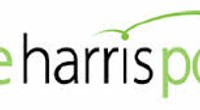News
Poll: Americans concerned about Ebola before Texas case
- Details
- Published on Thursday, 02 October 2014 16:56
- Written by PRNewswire
With Tuesday's announcement that a patient in Dallas, Texas was been diagnosed with Ebola, much discussion has since revolved around looking ahead – containing the disease and preventing it from becoming an outbreak.
Looking back, on the other hand, shows that as little as two weeks before the first diagnosed case within our borders, four in ten Americans (40%) perceived Ebola as a major or moderate threat to public health in the United States. Nearly half (47%) rated it either a minimal threat or no threat, while 13% were unsure.
Looking at other viruses and diseases evaluated in the study, more Americans expressed concerns that Hepatitis C (48%) and West Nile Virus (47%) represented major/moderate threats to public health in the U.S, while slightly fewer said the same of H1N1/"Swine Flu" (37%). Fewer still expressed concerns that SARS or Measles (28% each) represented such a threat, while one-fourth (25%) expressed such concerns over Rabies.
These are some of the results of The Harris Poll® of 2,543 adults surveyed online between September 10 and 17, 2014. It should be noted that while all interviews were conducted prior to the diagnosed case in Texas, the World Health Organization (WHO) had declared the Ebola epidemic in West Africa an international health emergency several weeks earlier.
While many of the viruses discussed within the survey varied by generation in terms of whether they represent a threat to public health in the U.S., no significant differences emerged for Ebola (39% Millennials, 37% Gen Xers, 42% Baby Boomers, 41% Matures).
When the same respondents were asked more broadly to describe how much of a threat to public health Ebola and the other diseases tested represent anywhere in the world, results suggest that coverage of the crisis in West Africa had permeated the public consciousness to a substantial degree. Eight in ten (80%) identified Ebola as a threat to public health anywhere in the world, with half (51%) specifically identifying it as a major threat.
Here, generational differences did emerge, with Matures (89%) and Baby Boomers (85%) more likely than Gen Xers (78%) and Millennials (72%) to identify Ebola as a threat to public health anywhere in the world. Nevertheless, strong majorities across generations did recognize Ebola as such.
At the time of the interview, 38% of Americans considered themselves to be very or somewhat knowledgeable about Ebola, putting it on par with Smallpox (also 38%) and just ahead of Hepatitis C (36%). By means of comparison, just over half of Americans considered themselves knowledgeable about Rabies (52%) and Measles (51%), while four in ten indicated the same for Polio (41%), H1N1/"Swine Flu"(also 41%) and West Nile Virus (40%).
Millennials (41%), Gen Xers (40%) and Baby Boomers (39%) were all more likely than Matures (29%) to describe themselves as knowledgeable about Ebola.
WHO reports that while Ebola Virus Disease fatality rates have ranged from 25% to 90%, they average at roughly 50%. Given this, Americans appear to slightly overestimate patients' likelihood of dying from the disease, estimating a mean of roughly 58% of diagnosed cases resulting in death.
Matures and Baby Boomers estimate higher mean fatality rates (64% and 61%, respectively) than Gen Xers (56%) and Millennials (54%).
An especially telling stat drives home the point that self-assessed knowledge does not necessarily equate to true knowledge. Those who consider themselves knowledgeable about Ebola are more likely than those who do not to overestimate the disease's fatality rate (with mean estimates of 64% and 54%, respectively)
This Harris Poll was conducted online within the United States between September 10 and 17, 2014 among 2,543 adults (aged 18 and over). Figures for age, sex, race/ethnicity, education, region and household income were weighted where necessary to bring them into line with their actual proportions in the population. Propensity score weighting was also used to adjust for respondents' propensity to be online.



















































